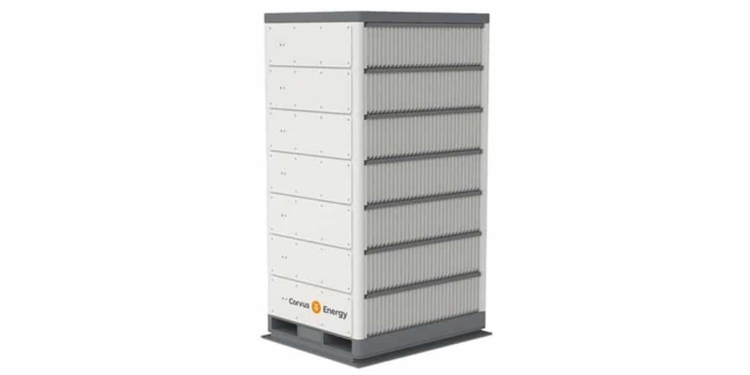Source: Corvus Energy news
Lithium-ion capacitor (LiC)-based energy storage systems (ESS) to be sold by Corvus to offshore vessels and oil rigs globally.
Bergen, Norway and Vancouver, Canada – September 24, 2019 – Subsequent to a product development agreement between Kawasaki Heavy Industries (KHI) and Corvus Energy that began in 2017, KHI and Corvus have reached a licensing agreement for a novel lithium-ion capacitor (LiC) technology developed by Corvus for KHI.
“Corvus Energy has been an outstanding development partner for the LiC technology,” says Takeshi Ohata, Managing Executive Officer of Kawasaki Heavy Industries at their headquarters in Tokyo, Japan. “Their battery engineering experience and marine market leadership gives Corvus Energy expertise unlike any other. Their know-how around thermal management inside battery modules is critical to ensuring safe and reliable operation.”
“It is truly a validation of our world-class R&D capabilities that KHI selected Corvus to develop this technology,” says Sean Puchalski, EVP of Strategy & Business Planning for Corvus Energy. “The new cutting-edge LiC technology provides the best of both worlds — current-handling performance nearing a supercapacitor with improved energy density. It will enable our Offshore customers to cost-effectively improve efficiency through energy recapture from heave compensation, drilling draw works and payload lowering applications with a lightweight, space-saving footprint.”
The LiC incorporates lithium-ion capacitor cells into an energy storage system (ESS) with high-efficiency liquid cooling that maintains an optimal temperature range at very high RMS currents and charge/discharge rates. The LiC will safely sustain charge/discharge rates of 600 C peak and 300 C continuous, enabling both energy recapture/storage and fast discharge for high-power load handling.
Corvus Energy will introduce a new product based on the LiC ESS technology with Kawasaki Heavy Industries, trademarked Blue Marlin and targeting the Offshore segment it currently serves with its Orca and Dolphin ESSs and Moray subsea ESS. The new Blue Marlin product is expected to be available in 2020.
“Corvus offers a timely solution to an urgent problem,” says Geir Bjørkeli, CEO of Corvus Energy. “Offshore producers are increasingly committed to investing in solutions that reduce the carbon footprint of their operations. We are thrilled that the progressive leadership at Corvus shareholders Equinor and Shell—whose offshore operations are the largest in the world—will help speed adoption of Corvus’ energy efficiency solutions in the Offshore segment.”
###
About Corvus Energy
Corvus Energy is the leading supplier of energy storage systems (ESS) for maritime, offshore, subsea and port applications. Corvus Energy offers a full portfolio of ESS suitable for almost every vessel type, providing high power energy storage in the form of modular lithium ion battery systems. The purpose-built, field-proven battery systems provide sustained power to hybrid and all-electric heavy industrial equipment, including large marine propulsion drives. Corvus Energy has unsurpassed experience from 250+ projects, totaling over 230MWh and more than two million operating hours.































